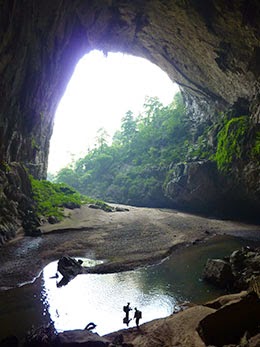 |
| Photo of Mark Jenkins courtesy of UW Profiles Page |
Start small: this is the advice of Mark Jenkins, National Geographic journalist and adventure writer. Whether you are a scientist, an essayist, a researcher preparing a presentation, or a hobbyist starting your own blog, this lesson can apply to your work. Every story starts with a single arresting detail.
When Jenkins turns in a story, he says, “I have to turn in notes that are this long” – he stretches his arms wide – “to verify everything.” GPS, weather reports, contacts: every assertion he makes in every article, whether the identity of a contact or the height of a mountain peak, must be independently fact-checked prior to publication. Jenkins is also a staunch advocate of careful note-taking techniques for any aspiring writer, recommending basic tools like a tape recorder for interviews and a digital camera to document surroundings at every step.
Mark Jenkins has worked as a journalist with National Geographic for nearly thirty years, covering war zones and scenes of natural grandeur all over the world. In 2012, he climbed Everest with an expedition commemorating the 50th anniversary of the first American ascent. His books include A Man’s Life: Dispatches From Dangerous Places; The Hard Way: Stories of Danger, Survival, and the Soul of Adventure; To Timbuktu: A Journey Down the Niger; and Off the Map: Bicycling Across Siberia. He is currently on assignment in Iceland.
Even after gaining this global perspective, he still believes that the best way to captivate readers is to start at ground level. He finds that the best entry point is the human angle: the person at the center of the story who can bring the story to life. For example, San Mao, the amputee at the center of Jenkins’ 2009 story about the devastation landmines have caused in Cambodia; or Saulius, the Lithuanian cyclist who led Jenkins’ tour through the Baltic in 1989.
Mark’s mission, then, is to help bring the world into focus in a few thousand words, so that readers can get a sense of the immediacy of firsthand experience. His challenge isn’t scaling the mountain, but bringing mountaineering down to human scale.
 |
| Photo from Hang Son Doong Expedition (Property of Mark Jenkins) |
Last year, Jenkins traveled to Vietnam to visit Hang Son Doong, “the largest cave on Earth.” Hang Son Doong, or “Mountain River Cave” is part of a network of largely unexplored caverns that extend through Phong Nha-Ke Bang National Park near the border with Laos. The expedition was the first to attempt a descent into this cave, which Jenkins describes as gigantic. Jenkins gave a talk on the expedition at the University of Wyoming on February 10 of this year, emphasizing the awe-inspiring scale and impenetrable darkness of Hang Son Doong’s interior.
National Geographic is not Jenkins' only outlet; he has also published stories in Outside, Men’s Health, and Time. National Geographic is perhaps the most prestigious travel magazine in the US, and Mark has a great deal to say about its high standards for submission and publication.
Conscientious research and editing is part and parcel of adventure and travel writing – as he says, “You must love writing more than you love travel.”
No comments:
Post a Comment